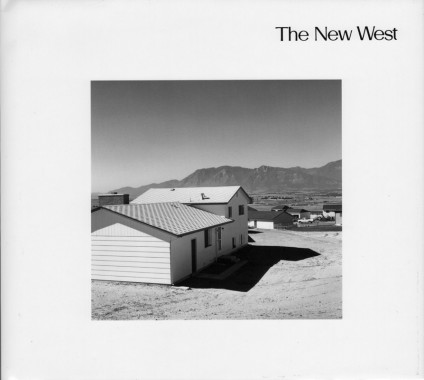
Robert Adams, The New West
Softcover, 136 pp., offset 1/duotone, 260 x 230 mm
Edition of 2000
ISBN 9781597110600
Published by Aperture
$45.00 ·
Originally published in 1974, Robert Adams’ The New West signaled a paradigm shift in the photographic representation of American landscapes. Foregoing photography’s traditional role of romanticizing the Western landscape, Adams focused instead on the construction of tract and mobile homes, subdivisions, shopping centers and urban sprawl in the suburbs of Colorado Springs and the Denver area. Adams transmuted these zones with his minimalist vision of their austerity; as he has noted, “no place is boring, if you’ve had a good night’s sleep and have a pocket full of unexposed film.” Objective and direct, Adams’ photographs, rendered in his signature middle-gray scale, unsentimentally depict a despoiled landscape washed in the intense Colorado sunlight. Today The New West stands alongside Walker Evans’ American Photographs, Robert Frank’s The Americans and Stephen Shore’s Uncommon Places in the pantheon of landmark projects on American culture and society. This second reissue of the classic publication has been recreated from Adams’ original prints.
Aperture, Art, DAP, John Szarkowski, Photography, Robert Adams, Robert Frank, Stephen Shore, Walker Evans
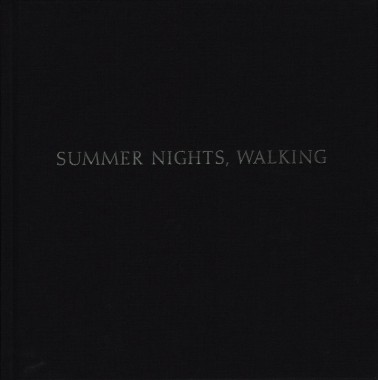
Robert Adams, Summer Nights, Walking
Softcover, 84 pp., offset 1/tritone, 8.75 x 9 inches
Edition of 2000
ISBN 9781597111171
Published by Aperture
$50.00 ·
In this exquisitely produced book, the influential American photographer Robert Adams revisits the classic collection of nocturnal landscapes that he began making in the mid-1970s near his former home in Longmont, Colorado. Originally published by Aperture in 1985 as Summer Nights, this new edition has been carefully reedited and resequenced by the photographer, who has added 39 previously unpublished images. Illuminated by moonlight and streetlamp, the houses, roads, sidewalks and fields in Summer Nights, Walking retain the wonder and stillness of the original edition, while adopting the artist’s intention of a dreamy fluidity, befitting his nighttime perambulations. The extraordinary care taken with the new reproductions also registers Adams’ attention to the subtleties of the night, and conveys his appeal to look again at places we might have dismissed as uninteresting. Adams observes, “What attracted me to the subjects at a new hour was the discovery then of a neglected peace.”
Aperture, Art, Photography, Robert Adams, Yale University Art Gallery
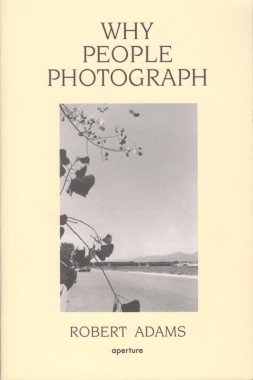
Robert Adams, Why People Photograph
Softcover, 189 pp., offset 1/1, 5.5 x 8.25 inches
Edition of 2000
ISBN 9780893816032
Published by Aperture
$15.00 ·
A now classic text on the art, Why People Photograph gathers a selection of essays by the great master photographer Robert Adams, tackling such diverse subjects as collectors, humor, teaching, money and dogs. Adams also writes brilliantly on Edward Weston, Paul Strand, Laura Gilpin, Judith Joy Ross, Susan Meiselas, Michael Schmidt, Ansel Adams, Dorothea Lange and Eugène Atget. The book closes with two essays on “working conditions” in the nineteenth- and twentieth-century American West, and the essay “Two Landscapes.” Adams writes: “At our best and most fortunate we make pictures because of what stands in front of the camera, to honor what is greater and more interesting than we are.”
Ansel Adams, Aperture, Criticism, DAP, Dorothea Lange, Edward Weston, Eugène Atget, Judith Joy Ross, Michael Schmidt, Paul Strand, Photography, Robert Adams, Susan Meiselas, Theory
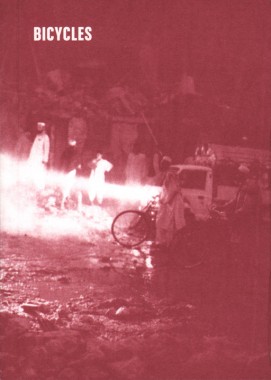
Michael Kim, Bicycles
Softcover, 48 pp., offset 1/1, 4 x 5.75 inches
Edition of 500
Published by Tramnesia
$8.00 ·
After Modern History is a report on world events that re-edits the news of the day by linking together images according to a totally idiosyncratic perspective of pattern recognitions and typologies.
After Modern History lifts photos from daily newspapers and re-organizes disparate, often atomized subjects into newly imagined affinities. For most people caught on the hard end of luck, the newspaper can be a lonely place. But in this second draft of history, bad news is no longer so isolated. There is no dateline.
Bicycles is a collection of newspaper clippings where bicycles appear incidentally to the photograph subject.
After Modern History, Art, Culture, Distribution, Graphics, Michael Kim, Photography, Tramnesia
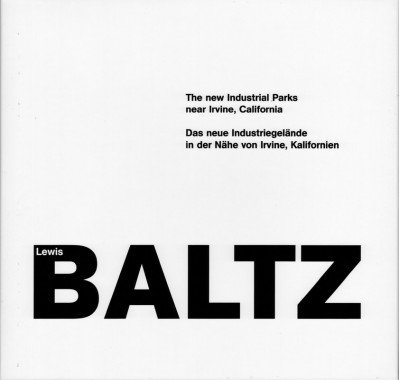
Lewis Baltz, The New Industrial Parks Near Irvine, California
Hardcover/slipcase, 112 pp., offset 1/duotone, 285 x 275 mm
English and German
Edition of 2000
ISBN 0-9630785-6-9
Published by RAM, Steidl
$55.00 ·
Lewis Baltz, with his iconic, minimalist photos of suburban landscape, is considered the founder of the New Topographics movement. Reproduced for the first time, his earliest portfolio, The Tract Houses (1971), and his preliminary forays into a minimal aesthetic, The Prototype Works (1967-1976), illuminate Baltz’s drive to capture the reality of a sprawling Western ecology gone wild. Together with The New Industrial Parks near Irvine, California, this trilogy reveals the indelible importance of Baltz in the development of contemporary photography. “Baltz turned his camera on the virtually featureless built environment of California … He pushed his compositions to an astringent minimum,” writes curator Sheryl Conkelton in an informative essay.
Art, Lewis Baltz, Photography, RAM, Sheryl Conkelton, Steidl, Whitney Museum
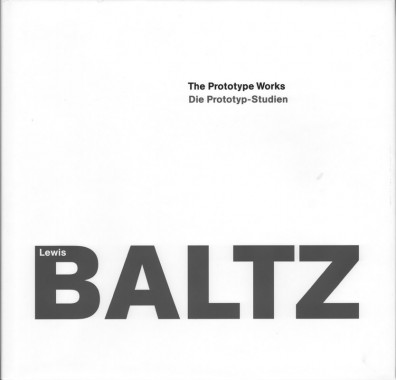
Lewis Baltz, The Prototype Works
Hardcover, 112 pp., offset 1/tritone, 285 x 275 mm
English and German
Edition of 2000
ISBN 0-9703860-5-2
Published by RAM, Steidl
$70.00 ·
Lewis Baltz, with his iconic, minimalist photos of suburban landscape, is considered the founder of the New Topographics movement. Reproduced for the first time, his earliest portfolio, The Tract Houses (1971), and his preliminary forays into a minimal aesthetic, The Prototype Works (1967-1976), illuminate Baltz’s drive to capture the reality of a sprawling Western ecology gone wild. Together with The New Industrial Parks near Irvine, California, this trilogy reveals the indelible importance of Baltz in the development of contemporary photography. “Baltz turned his camera on the virtually featureless built environment of California … He pushed his compositions to an astringent minimum,” writes curator Sheryl Conkelton in an informative essay.
Art, Lewis Baltz, Photography, RAM, Sheryl Conkelton, Steidl, Whitney Museum
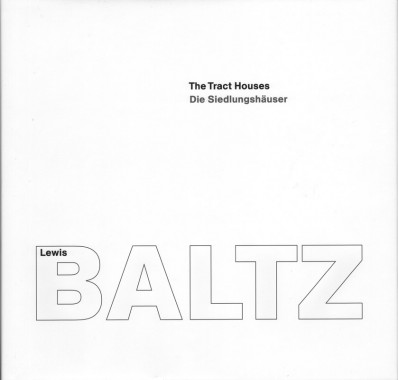
Lewis Baltz, The Tract Houses
Hardcover, 68 pp., offset 1/tritone, 285 x 275 mm
English and German
Edition of 2000
ISBN 0-9703860-4-4
Published by RAM, Steidl
$65.00 ·
Lewis Baltz, with his iconic, minimalist photos of suburban landscape, is considered the founder of the New Topographics movement. Reproduced for the first time, his earliest portfolio, The Tract Houses (1971), and his preliminary forays into a minimal aesthetic, The Prototype Works (1967-1976), illuminate Baltz’s drive to capture the reality of a sprawling Western ecology gone wild. Together with The New Industrial Parks near Irvine, California, this trilogy reveals the indelible importance of Baltz in the development of contemporary photography. “Baltz turned his camera on the virtually featureless built environment of California … He pushed his compositions to an astringent minimum,” writes curator Sheryl Conkelton in an informative essay.
Art, Lewis Baltz, Photography, RAM, Sheryl Conkelton, Steidl, Whitney Museum
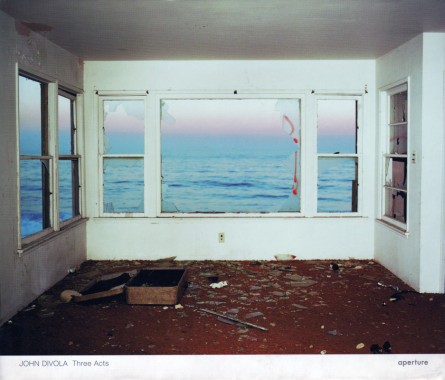
John Divola, Three Acts
Hardcover, 144 pp., offset 4/duotone, 11 x 9.25 inches
Edition of 2000
ISBN 9781931788953
Published by Aperture
$50.00 ·
In 1973, California artist John Divola began the first of three highly ambitious and original bodies of work that form Three Acts, the first book dedicated to them. His Vandalism series comprises black-and-white photographs of interiors of abandoned houses. Entering illegally, Divola spray-painted markings that referenced action painting as readily as the graffiti that was then becoming a cultural phenomenon. For the following year’s Los Angeles International Airport Noise Abatement series, he photographed a condemned neighborhood bought out to serve as a noise buffer for new runways, focusing on evidence of previous unsanctioned entries by other vandals. His final work, Zuma, documents the destruction of an abandoned beachfront property by the artist and others, as it deteriorates frame by frame and eventually burns. Divola has much in common with artists such as Bruce Nauman and Robert Smithson who have used photography to investigate other topics. He describes his innovative practice succinctly: “My acts, my painting, my photographing, my considering, are part of, not separate from, this process of evolution and change. My participation was not so much one of intellectual consideration as one of visceral involvement.”
Aperture, Art, DAP, David Campany, Francesca Richer, Jan Tumlir, John Divola, Michael Famighetti, Photography

Not Equal, 2009, Plywood, wood glue and enamel paint, 13.1 x 17.75 inches
Shannon Ebner
Invisible Language Workshop
30 October — 19 December 2009
Opening Reception: Friday 30 October, 6-8pm
Wallspace
Images point to what is in the world; that is the problem with representation. I think that is why there has been so much activity around abstraction — it offers one possible way around the problem of pictures. I am looking for a way out of the problems of representation but I am not satisfied to leave the world of representation all together. I am somehow looking to stay in the world of depictive images by simply asking for more from them through developing a different system, idea or model of how they might function.
—Shannon Ebner
Art, Photography, Shannon Ebner, Typography, Wallspace
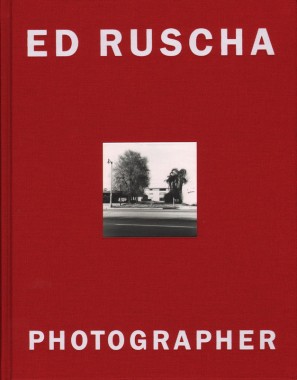
Ed Ruscha, Ed Ruscha Photographer
Hardcover, 184 pp., offset 4/1, 225 x 260 mm
Edition of 2000
ISBN 9783865212061
Published by Steidl
$35.00 ·
Ed Ruscha’s relationship to photography is complex and ambivalent. The world-class painter — and author of a 1972 New York Times article called “‘I’m Not Really a Photographer’” — has been known to refer to his work in this second medium as a “hobby,” despite considerable, persistent critical interest. Whether he likes it or not, the small albums of plainly-shot, snapshot-sized images he produced in the 1960s and 70s, including Twenty-Six Gasoline Stations, intrigued his contemporaries and earned him an unshakable reputation. How? His subject matter was neither purely documentary nor solely artistic, in fact it was stereotypical and banal, with motifs drawn from the car-dominated western landscape. That rebellious material, along with his serial presentation, made for a mythical road-movie or photo-novel effect with Beat Generation overtones. The combination attracted artists and critics both, especially while serial logic was prominent in Pop art and Minimalism, and then retained that interest later as serial work became prominent in Conceptual art. Critics have remained attentive for decades, and Ruscha’s influence remains apparent in new work in Europe and North America. Ed Ruscha, Photographer departs from earlier collections to explore how these images — and all of Ruscha’s work in disciplines including painting, drawing, printmaking and photography–are guided and shaped by a single vision.
Art, DAP, Ed Ruscha, Lynn Scrabis, Makiko Ushiba, Photography, Steidl, Thea Hetzner, Whitney Museum
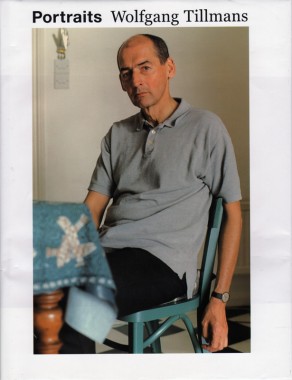
Wolfgang Tillmans, Portraits
Softcover, 144 pp., offset 4/4, 235 x 305 mm
Edition of 2000
ISBN 9781891024368
Published by Walther König/Distributed Art Publishers
$40.00 ·
For artist Wolfgang Tillmans, portraiture is a collaborative process between photographer and accomplice. While Tillmans’ photographs are often referred to as casual, they are actually the result of a carefully constructed process of engagement with his models. Each sitter, be they a world-famous rock star or a family member, projects both vulnerability and dignity. Presented here are a selection of some of the best of these portraits, taken between 1988 to 2001, and chosen by Tillmans himself. Subjects include filmmaker John Waters, architect Rem Koolhaas, musicians Moby and Michael Stipe, actresses Irm Hermann and Chloë Sevigny, as well as the artist’s family and friends.
Art, DAP, Distributed Art Publishers, Photography, Walther König, Wolfgang Tillmans
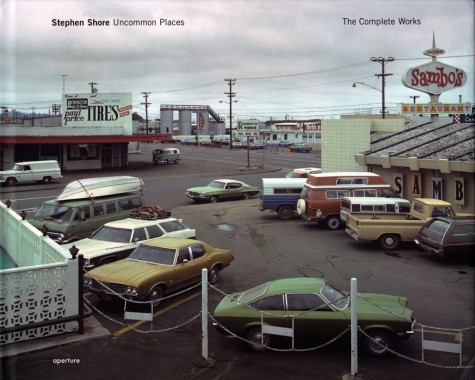
Stephen Shore, Uncommon Places
Hardcover, 188 pp., offset 4/4, 12.75 x 10.5 inches
Edition of 5000
ISBN 9781931788342
Published by Aperture
$55.00 ·
Published by Aperture in 1982 and long unavailable, Stephen Shore’s legendary Uncommon Places has influenced a generation of photographers. Among the first artists to take color beyond advertising and fashion photography, Shore’s large-format color work on the American vernacular landscape stands at the root of what has become a vital photographic tradition. Uncommon Places: The Complete Works presents a definitive collection of the original series, much of it never before published or exhibited. Like Robert Frank and Walker Evans before him, Shore discovered a hitherto unarticulated version of America via highway and camera. Approaching his subjects with cool objectivity, Shore’s images retain precise internal systems of gestures in composition and light through which the objects before his lens assume both an archetypal aura and an ambiguously personal importance. In contrast to Shore’s signature landscapes with which Uncommon Places is often associated, this expanded survey reveals equally remarkable collections of interiors and portraits. As a new generation of artists expands on the projects of the New Topographic and New Color photographers of the seventies — Thomas Struth (whose first book was titled Unconscious Places), Andreas Gursky and Catherine Opie among them — Uncommon Places: The Complete Works provides a timely opportunity to reexamine the diverse implications of Shore’s project and offers a fundamental primer for the last 30 years of large-format color photography.
Andreas Gursky, Aperture, Art, Catherine Opie, DAP, Lynne Tillman, Photography, Robert Frank, Stephan Schmidt-Wulffen, Stephen Shore, Thomas Struth, Walker Evans
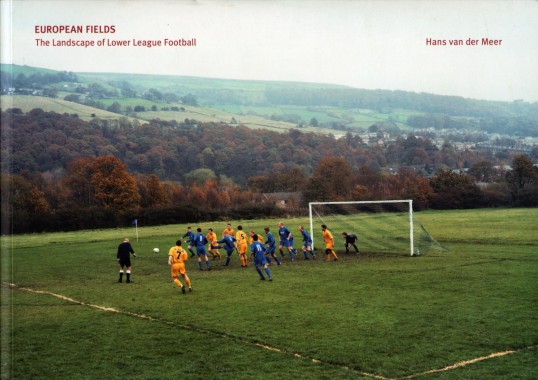
Hans van der Meer, European Fields
Hardcover, 176 pp., offset 4/4, 297 x 210 mm
Edition of 5000
ISBN 9783865212382
Published by Steidl
$30.00 ·
At the beginning of the 1995 soccer season, Hans van der Meer set out to take photographs of the game that dodged the cliched traditions of modern sports photography. In an attempt to record the sport in its original form — a field, two goals and 22 players — he sought matches at the bottom end of the amateur leagues. He avoided tight telescopic details and the hyperbole of action photography, pulled back from the central subject of the pitch, and set the playing field and its unfolding action in the context of local elements. Over the last 10 years, Van der Meer has continued this project across the playing fields of Europe, traveling to every country with a significant history of the game. The Netherlands yielded 1998’s Dutch Fields, and the odyssey that brings forth European Fields has since taken him from Bihariain, Romania to Bjàrkà, Sweden, from Torp, Norway to Als*àrs, Hungary, from Bartkowo, Poland to Beire, Portugal, and to urban and suburban Greece, Finland, England, France, Germany, Scotland, Switzerland, Holland, Slovakia, Denmark, Ireland, Wales, Belgium, Spain and Italy. Van der Meer’s understated observations of the poetry and absurdity of human behavior on the field use soccer to consider–and provoke a laugh at–the human condition.
Art, DAP, Hans van der Meer, Michael Mack, Photography, Simon Kuper, Sport, Steidl












